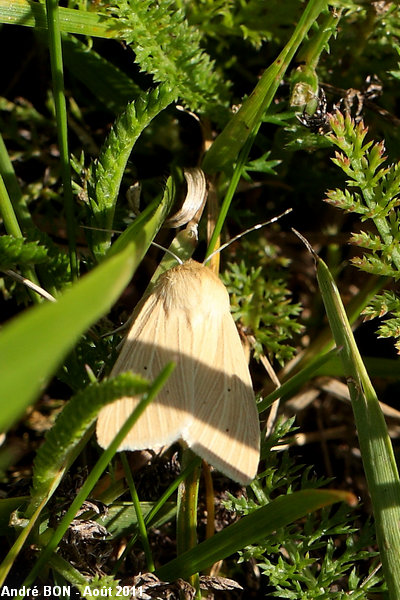
| Smoky Wainscot (Mythimna impura (Hübner, 1808)) |

|
|
Scientific name: Mythimna impura (Hübner, 1808) Common name: Smoky Wainscot Other names: Other scientific name: Aletia impura French name: Leucanie souillée Order: Lepidoptera Suborder: Heterocera Family: Noctuidae Subfamily: Noctuinae Wingspan: 31-38 mm. Biotope: Damp meadows, damp clearings, pond banks. Geographic area: Europe, Russia, Siberia, Mongolia. Flight time: May-June then July-September. Number of generations : 2 (1 in the northern part of its range). Caterpillar: Pale brown with white and dark longitudinal lines and some sparse black spots. Host plant: Many grasses in damp places including Sedges (Carex sp.) |
The Smoky Wainscot shows straw coloured fore wings with whitish veins. There are three small black spots, one in the middle of the median area, another one in the middle of the postmedian area and a third one, in between, but closer to the inner edge. The hind wings are dark with a white fringe. They do not show any black spot. The Common Wainscot (Mythimna pallens) only shows the first two black spots. It is missing the one close to the inner edge. The hind wings are white. The Southern Wainscot (Mythimna straminea) shows a sharper apex on the fore wings. There are two black spots in the median area and a complete row in the post median area. The hind wings are moderately dark with black spots. |
| [To know more about the Smoky Wainscot] [Top] |

|
The rounded apex of the fore wings is enough to discard the Mythimna straminea species. You can see three black spots forming a triangle. One of these spots is close to the inner edge so this confirms the Smoky Wainscot (Mythimna impura). A view of the hind wings would have been better (hoping that they are dark) to confirm the species. |